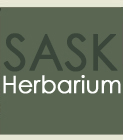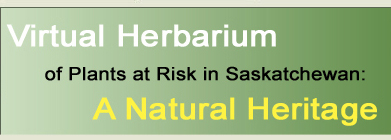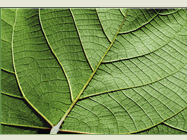|
| Ranunculus hyperboreus
var. hyperboreus Rottb. |
|
| |
| TAXONOMY |
| |
| Family: |
Ranunculaceae |
| Genus: |
Ranunculus |
| |
| Species Synonyms: |
none |
| Common Names: |
large nodding buttercup
boreal buttercup
far-northern buttercup |
| |
| DISTRIBUTION |
| |
| Canada: |
Yukon – Mackenzie District – Keewatin
District – Arctic Island, south to British Columbia – southwestern
Alberta – northwestern Saskatchewan – northern Manitoba –
northern Ontario – Ungava – eastern Quebec – Labrador
– northern Newfoundland |
| Saskatchewan: |
northeastern Saskatchewan; Lake Athabasca |
| Ecoregion: |
Athabasca Plain |
| |
| HABITAT |
| |
| Saskatchewan: |
shallow beach pools and wet sand on lake and stream
shores |
| Canada: |
shallow fresh or brackish waters |
| |
| RARITY STATUS |
| |
Provincial
Status According
to Harms (2003): |
Endangered |
| Nature Conservancy
Status: |
G5 S1 |
Saskatchewan
Species at
Risk Status: |
None |
| COSEWIC Status:
|
None |
| |
| Large nodding buttercup
is endangered because of extreme rarity in Saskatchewan. It is restricted
to one small region of the province and most local populations are small.
No immediate threats are known but may occur in the future. |
| |
| SPECIES
DESCRIPTION |
| |
| Roots: |
fibrous |
| Stems: |
lying flat on the ground or floating, rooting
at the lower nodes, branching |
| Leaves: |
basal leaves absent; stem leaves 3 – 12
mm long, 5 – 21 mm wide, kidney-shaped to fan-shaped, deeply 3-lobed,
base obtuse to heart-shaped, lobes undivided, terminal segment entire or
distantly round-toothed, lateral lobes 2-lobed |
| Inflorescence: |
flowers solitary; receptacle elongating in fruit,
developing into head of single-seeded fruits |
| Flowers: |
receptacle hairless; sepals 3 – 4, spreading
or reflexed, hairless; petals 3 – 4, egg-shaped, yellow; nectary on
petal surface; stamens many; carpels many on a receptacle |
| Fruits: |
heads of one-seeded fruits round; fruits 20 –
60, hairless, beak linear |
| |
| RANUNCULUS
KEY FOR SPECIES FOUND IN SASKATCHEWAN |
| |
| 1 Petals white; aquatic plants with
all leaves submersed |
R. aquatilis var. diffusa |
| 1 Petals yellow; mostly terrestrial
plants or not strictly aquatic (except R. gmelinii) |
2 |
| |
|
2 Fruits with 3 or 4 longitudinal
nerves; leaves round-toothed; plants with runners
|
R. cymbalaria |
| 2 Fruits not nerved longitudinally;
leaves various; plants without runners |
3 |
| |
|
| 3 Basal leaves entire to slightly
lobed, upper leaves similar or absent |
4 |
| 3 Basal leaves distinctly toothed,
lobed or divided OR if entire, stem leaves deeply lobed or cleft and unlike
the basal leaves OR basal leaves absent |
5 |
| |
|
| 4 Leaves linear and essentially bladeless
or blades linear |
R. flammula var. reptans |
| 4 Leaves with well-developed lance-shaped
to oval blades |
R. flammula var. ovalis |
| |
|
| 5 Sepals 3 or 4; leaves kidney-shaped |
6 |
| 5 Sepals 5; leaves of various shapes |
7 |
| |
|
| 6 Plants at least partially aquatic,
< 5 cm high; leaves to 1 cm wide; fruits not constricted, nearly beakless |
R. hyperboreus var. hyperboreus |
| 6 Plants terrestrial, 10 – 20
cm high; leaves to 5 cm wide; fruits constricted near the middle, beak hooked |
R. lapponicus |
| |
|
| 7 Plants strictly aquatic, weak stems
floating |
R. gmelinii |
| 7 Plants not strictly aquatic |
8 |
| |
|
| 8 Beaks of fruits minute, fruit corky-thickened
towards base; plant fleshy; lower leaves stalked |
R. sceleratus |
| 8 Beaks of fruits distinct, fruit
not corky-thickened towards base; plants not fleshy; lower leaves more or
less all sessile |
9 |
| |
|
| 9 Basal leaves entire to round-toothed
or shallowly 3 – 5-lobed, stem leaves cleft or divided |
10 |
| 9 Basal leaves deeply dissected, the
lobes often toothed |
15 |
| |
|
| 10 Hairs on sepals reddish-brown,
long; stems usually 1-flowered |
R. nivalis |
| 10 Sepals hairless or white-hairy;
stems usually 2 – many-flowered |
11 |
| |
|
| 11 Fruiting heads cylindrical |
12 |
| 11 Fruiting heads nearly round |
13 |
| |
|
| 12 Fruits to 150 per aggregate, finely
hairy; plants hairy; petals 5 – 9 mm long |
R. glaberrimus var. ellipticus |
| 12 Fruits to 50 per aggregate, hairless;
plants hairless; petals 6 – 15 mm long |
R. rhomboideus |
| |
|
| 13 Petals 1.5 – 3 mm long; basal
leaves kidney-shaped |
R. abortivus |
| 13 Petals greater than 3 mm long;
basal leaves circular or heart-shaped |
14 |
| |
|
| 14 Flower stalks stout; petals 8 –
15 mm long; stems and leaves long-hairy |
R. cardiophyllus |
| 14 Flower stalks slender; petals 3
– 8 mm long; stems and leaves nearly hairless |
R. inamoenus var. inamoenus |
| |
|
| 15 Fruits slightly flattened, beaks
slender; receptacle in fruit 4 times its length in flower |
R. pedatifidus var. affinis |
| 15 Fruits very strongly flattened,
beaks stout; receptacle in fruit < 3 times its length in flower |
16 |
| |
|
| 16 Petals 5 – 15 mm long, noticeably
longer than sepals; sepals spreading; terminal segment of larger leaves
sessile |
R. acris var. acris |
| 16 Petals 4 – 5 mm long, shorter
than or barely surpassing sepals; sepals reflexed; terminal segment of larger
leaves stalked |
17 |
| |
|
| 17 Stems reclining or prostrate, often
rooting at lower nodes; petals equalling or longer than sepals, deep yellow;
sepals purplish; heads of fruits ovoid to round |
R. macounii |
| 17 Stems erect, not rooting at the
nodes; petals shorter than sepals, pale yellow; sepals yellowish; heads
of fruits cylindrical |
R. pensylvanicus |
|






